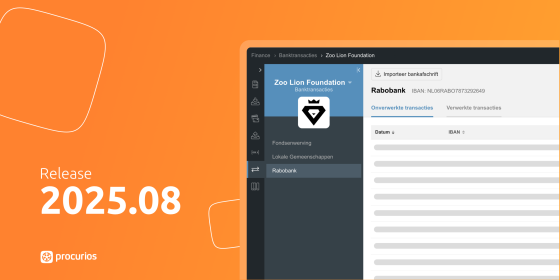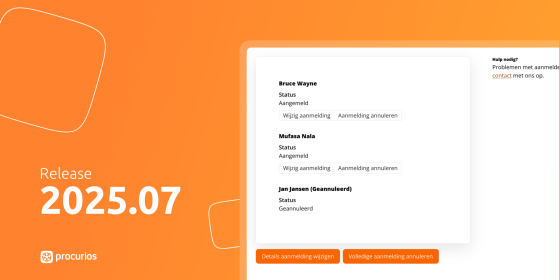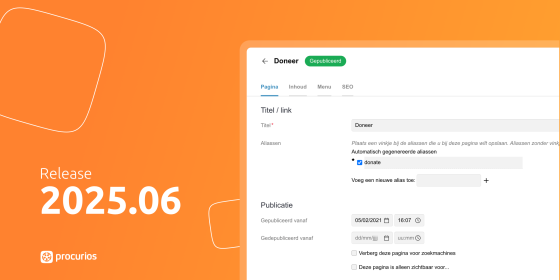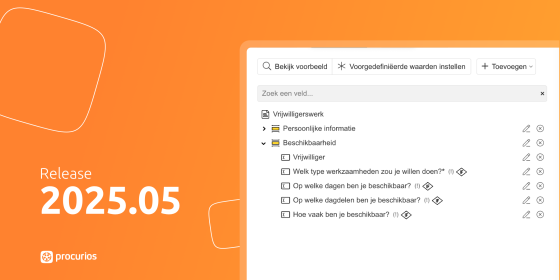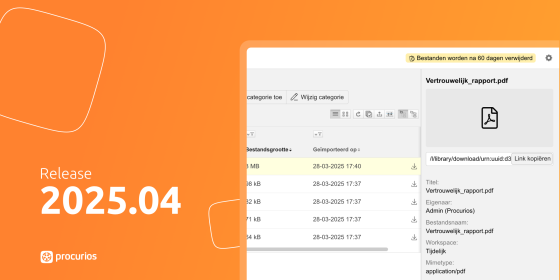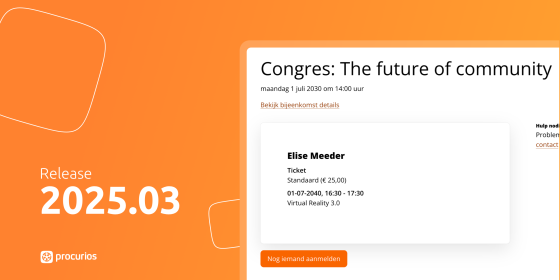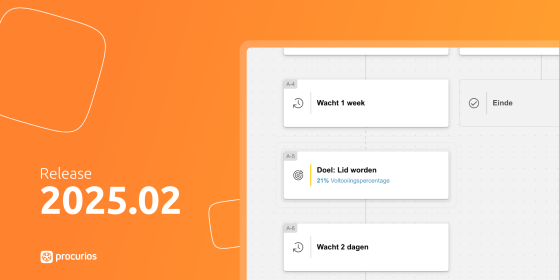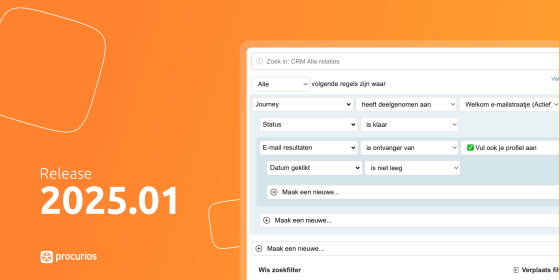Release 2025.09
As of August 26, 2025, all customers on the production version of the Procurios Platform will use release 2025.09. In this blog you can read what is new and what has been improved.
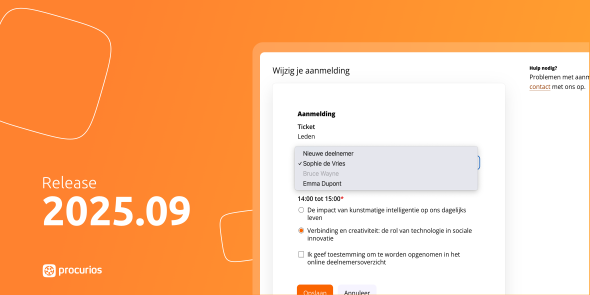
CMS: Set retention period for stored cookies
When a visitor to your website consents to the placement of cookies, this consent is stored so that it can be traced back to the purpose for which consent was given at any time.
From now on, this consent is automatically retained for five years, after which it is automatically deleted. You can extend this period to seven years if desired.
Marketing Automation: prevent unwanted journeys with duplicate relations
A relation has been involved with your organization for years as a donor or has been a member for several years. By making a new donation based on a campaign, they re-enter your CRM. In this case, you want to thank them, but not welcome them as a "new donor." Merge rules can prevent the initial potential duplicates, but what if the old relation doesn't have an email address and the new one does? Or what if other reasons prevent automatic deduplication? Then you still want to prevent inappropriate communication and potentially wait for manual deduplication.
With the new step type "Wait for Deduplication" in Marketing Automation, you can now prevent this. This special step can only be placed as the first step in the journey (immediately after the trigger) and ensures that the system immediately checks for potential duplicates—instead of waiting for the usual nightly calculation.
Relations remain in this step until the system has determined that they are not duplicates. This check is performed based on the list of contacts to be deduplicated. When adding this step, you also set a maximum wait time. If the contact is deduplicated within that time, it will continue in the journey. However, if no deduplication decision has been made after the set time, the journey will automatically stop for that contact.
This wait step provides extra control in addition to the automatic merge rules you may have already set up. While these rules are primarily useful for registration forms, this journey step also offers a solution for contacts received via imports. This allows you to maintain control over your processes and prevent existing supporters from being incorrectly treated as new contacts.
Read more about relation deduplication in our helpcenter (dutch)

Mailings/Marketing Automation: clicks on unsubscribe links no longer count as CTR/CTOR
Seeing how often links or buttons in your newsletter have been clicked is important feedback for understanding your target audience's interests and determining whether your email was successful.
It's important to distinguish between positive interactions (such as clicks to your website or a registration form) and negative interactions (such as unsubscribes). Until now, however, unsubscribe clicks were still included in the click-through rate (CTR) and click-through open rate (CTOR), resulting in less accurate statistics.
From now on, clicks on unsubscribe links will no longer be included in the CTR and CTOR calculations. This means your organization will get a more realistic picture of actual engagement with the content of your mailings. Clicks on unsubscribe links will still be recorded separately and remain visible in the click overview, but will no longer count as a "relevant" click.
Meetings & Events: adding the number of anonymous participants to a meeting
A visitor arrives at the registration desk at your event. They still want to participate, even though they weren't registered in advance. You still have room, so welcome! However, you until now you couldn't record these anonymous participants, which could have resulted in incomplete reports.
From now on, you can specify the number of anonymous participants present after the event. These values will then be included in the list and in the export of meetings, so you can still get a complete picture of the success of your meetings with a single click.
Meetings & Events: program dates available as tokens in emails
If you organize multi-day training courses, workshops, or events, you'll likely want to inform your participants via email about the exact program dates when confirming their registration. Until now, you had to manually add this information to the email body. This was cumbersome and prone to errors.
Starting with this release, you can easily add program dates and times to your email communications using tokens. This means you can automatically display all relevant days and times of the program in a registration confirmation or reminder email.

Meetings & Events: switching participants within group registrations
You're organizing a meeting where groups register. Someone has registered the entire team, but later it turns out a colleague can't make it and needs to be replaced by someone else. Until now, the registrant had to cancel the original registration and create a new one, or you had to do it manually for them. This takes time and creates administrative hassle.
From now on, registrants can easily replace a participant themselves during group registrations. When changing the registration, they can choose from existing contacts or enter a new contact. The system uses the same settings as the original registration process you set up.
If you want registrants to be able to choose from existing contacts, the "Organizations & People" functionality must be enabled for your meeting. For new contacts, the registration form for additional participants is used. The new participant automatically receives the confirmation email so everyone is informed.

Meetings & Events: meeting language settings moved and improved
For a multilingual meeting, you can add multiple languages, each with its own text, during setup. However, when deselecting an additional language, it wasn't clearly communicated that this might cause texts or titles to be lost. Because deleting a language cannot be undone, this could lead to undesirable situations.
To reduce the chance of accidentally deleting a language, you can now only change/delete a meeting's language using a separate button. Before the language is permanently deleted, an appropriate warning is now displayed.



